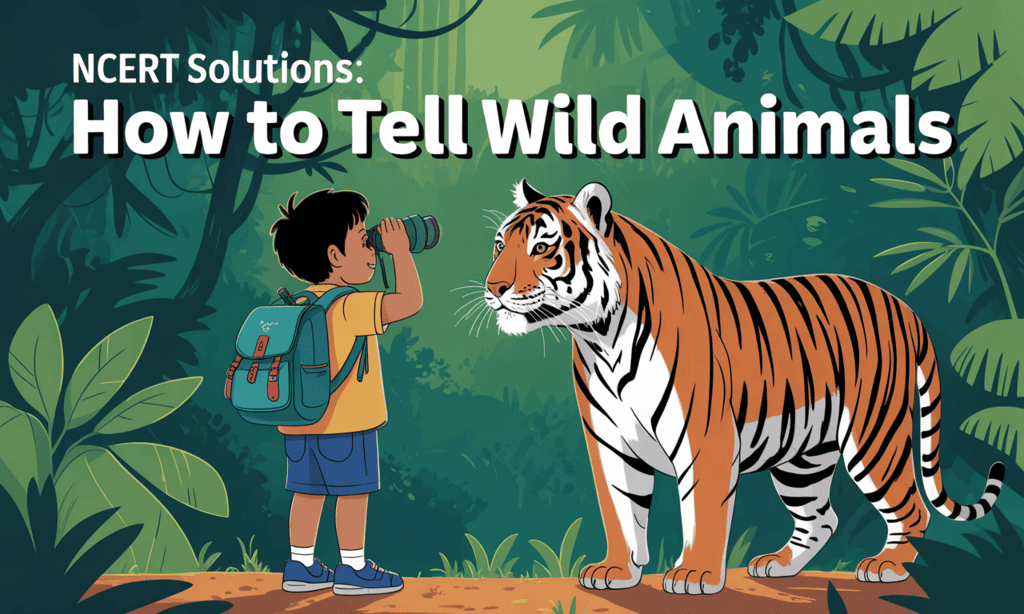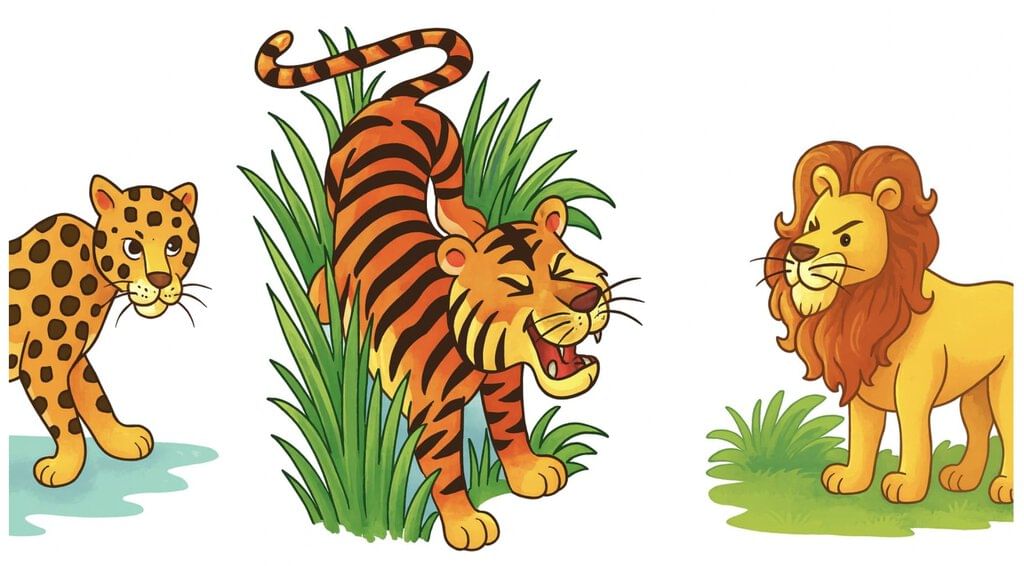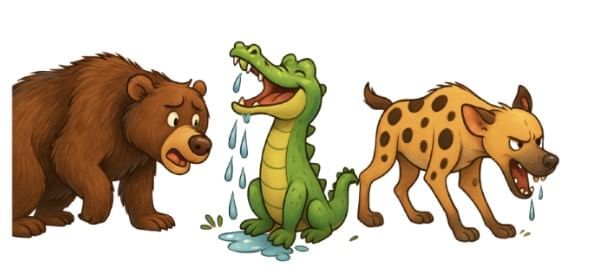NCERT Solutions for Class 10 English First Flight Chapter 4 - How to Tell Wild Animals

Q1: Does ‘dying’ really rhyme with ‘lion’? Can you say it in such a way that it does?
Ans: No, ‘dyin’ does not rhyme with ‘lion’. If we pronounce the word ‘lion’ as ‘lying’, then probably it would rhyme with the word ‘dyin’.
Q2: How does the poet suggest that you identify the lion and the tiger? When can you do so, according to him?
Ans: The poet suggests that if a large and tawny beast in the jungle in the east advances towards us, then it is an Asian lion. We can identify it when it roars at us while we are dying in fear. When roaming, we come across a wild beast that is yellow in colour with black stripes; it is a Bengal tiger. We can identify it when it eats us. Q3: Do you think the words ‘lept’ and ‘lep’ in the third stanza are spelt correctly? Why does the poet spell them like this?
Q3: Do you think the words ‘lept’ and ‘lep’ in the third stanza are spelt correctly? Why does the poet spell them like this?
Ans: The poet intentionally spells the words ‘lept’ and ‘lep’ incorrectly to maintain the rhythm and flow of the poem. The correct spellings are ‘leapt’ and ‘leap,’ but by altering them, the poet adds a humorous twist to the verse. The poet has intentionally spelt them incorrectly to create a sense of humour.
Q4: Do you know what a ‘bearhug’ is? It’s a friendly and strong hug — such as bears are thought to give, as they attack you! Again, hyenas are thought to laugh, and crocodiles to weep (‘crocodile tears’) as they swallow their victims. Are there similar expressions and popular ideas about wild animals in your own language(s)?
Ans: A ‘bearhug’ refers to the tight, powerful embrace of a bear, often used when it attacks its prey. Similarly, other animals have expressions linked to their behaviours or appearances. For example, a hyena doesn’t actually laugh, but its face appears as if it’s smiling. Crocodiles, on the other hand, don’t weep out of sadness, but they seem to shed tears when they swallow their prey, giving rise to the expression "crocodile tears."
Q5: Look at the line “A novice might nonplus”. How would you write this ‘correctly’? Why is the poet’s ‘incorrect’ line better in the poem?
Ans: The line “A novice might nonplus” can be correctly written as “A novice might be nonplussed”. The poet’s incorrect line is better in the poem as it maintains the rhyme scheme of the poem. By writing it incorrectly, ‘nonplus’ rhymes with ‘thus’.
Q6: Can you find other examples of poets taking liberties with language, either in English or in your own language(s)? Can you find examples of humorous poems in your own language(s)?
Ans: Yes, poets often take liberties with language to ensure the poem flows smoothly and maintains a proper rhyme scheme. For example, a poet may use the word ‘rest’ to rhyme with ‘best’ or ‘ten’ to rhyme with ‘pen,’ even if the pairing doesn’t follow strict grammatical or linguistic rules.
|
61 videos|617 docs|69 tests
|
FAQs on NCERT Solutions for Class 10 English First Flight Chapter 4 - How to Tell Wild Animals
| 1. What are the main characteristics used to identify wild animals in the poem "How to Tell Wild Animals"? |  |
| 2. How does the poet humorously describe wild animals in "How to Tell Wild Animals"? |  |
| 3. What is the significance of the poem's title "How to Tell Wild Animals"? |  |
| 4. Which animals are specifically mentioned in the poem, and what traits are highlighted for each? |  |
| 5. How does the poem "How to Tell Wild Animals" blend education and entertainment? |  |

















